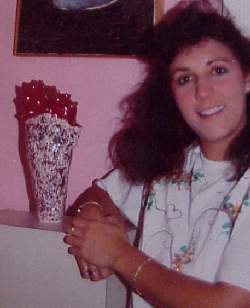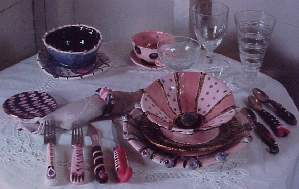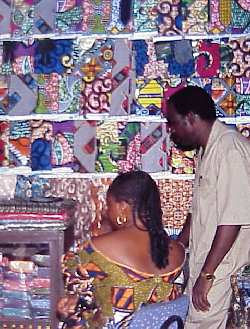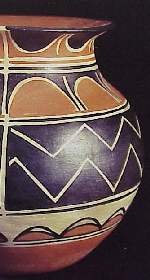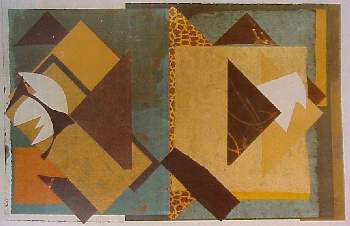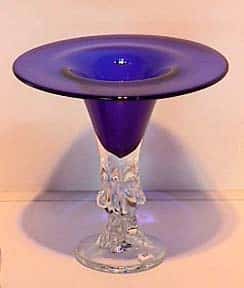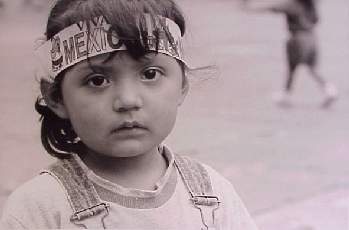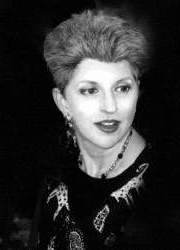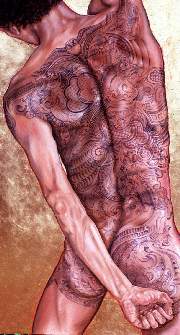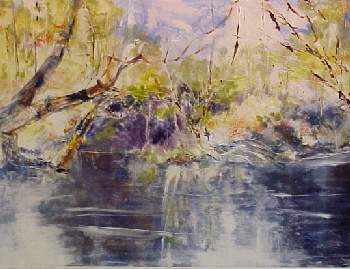FMU Faculty Art Exhibition
Hyman Fine Arts Center Galleries
July 1 – August 16, 2000
Passages to Flesh Fields: Artist Jim Boden, Coker College
Hyman Fine Arts Center Gallery
August 22 – October 6, 2000
“For a number of years I have examined the figure in my work. I focused a great deal of attention on body language and the figure’s ability to mirror or externally manifest inner, emotional states of “being.” After a series of constructed body parts amalgamated into imperfect Colossi, I turned to the internal as an opportunity to investigate “body language.”
“We speak of our stomachs “twisted in knots” or “hearts skipping a beat” and other tangible visions of our internal palpitations and twitches. This loose umbrella of an idea was the start of the Passage series of which Vellicate, Elderly Women and Jazz Musicians, and Cippus are a part. The Passage pieces are fragments or moments of an internal journey.
“None of these forms are specific internal organs, most actually began as external body parts, fragments from the Colossi studies. As coloration of muscles, sinew, and fascia were applied to the forms, an “internal” interpretation became more readable. The rich coloration that we have within our bodies fascinated me. The Passages series was not intended as a journey of the digestive tract, blood stream, or oxygen passages but as an excavation or spelunking of the “inner core of being” within our physical and mental caverns. Passages, journeys, and distances traveled, as well as, the ancient practices of examining the organs of animals, enemies, or sacrifices to read the future all began interweaving through the series.
“Near the completion of the Passage series, I wanted to come back out to the exterior of the figure but I found it difficult to deal with the figure from a distanced stance. I was caught at the boundary that separates the internal from the external and I began to hover just over its surface. I began looking at flesh up close, as a lunar explorer might hover over a foreign terrain. Flesh Field is the initial piece that I created while considering the use of skin as a “map of being.” Protrubance and Hetarai followed and the exploration expanded to consider tribal charms and rituals. The fortune-telling aspects of organ readings led my investigation to consider the mapping of the hand; the past-the present-the future; the tattooing of flesh; and life’s collection of scars that are perpetrated upon the flesh.”
Ceramics by Elizabeth Kirven
Hyman Fine Arts Center Gallery
August 22 – October 6, 2000
Elizabeth Kirven received her BFA from Temple University Tyler School of Art. Now residing in the Pee Dee, she works primarily in low fire white earthenware. Her pieces are hand build and/or hand thrown and assembled. Her non-traditional use commercial glazes involves unconventional juxtaposition of color and texture. A single piece may go through as many as twelve different firings to achieve the desired effect. Semi-precious stones, paint and other media are incorporated into many of the pieces.
“The works of spirit dance started out as energy. The energy evolved into an idea, which evolved into a form. Each form represents a certain aspect of spirit, or a soul’s vision. Everything in life has a rhythm and in essence we are all dancing to this rhythm, this vision will continue to the realm of infinity as energy never ‘dies.’
“Each work represents emotions, feelings or times of evolution as we progress in the dance. Colors become ideas. Ideas become dreams, all are bound together by a universal energy.
“We are each unique in our own way as our dance is unique; but we are also interconnected to everything that surrounds us. In that aspect we dance together as well as alone. Revolving in the great circle we call life.”
— Namaste, Elizabeth
The Art of West African Printed Textiles
from the collection of Alice Burmeister,
Assistant Professor of Art History, Winthrop University
Smith University Center Gallery
August 29 – November 3, 2000
“From its first importation into West Africa by English and Dutch textile merchants in the late nineteenth century, to its current mass production in African-based companies, factory-printed cotton cloth has enjoyed a rich and thriving history in African life. Such textiles, brightly-colored and boldly graphic in design, often feature a wide variety of social, political and religious slogans and imagery. In addition to being both visually-striking and pleasing to the eye, cloth may also be designed to communicate important cultural messages or ideologies. The creative design, production and wearing of such cloth in the West African context clearly attests to its potency as a form of artistry, as well as its efficacy as a vehicle for social expression.”
Native Art of the Americas
from the Florence Museum Permanent Collection
Hyman Fine Arts Center Gallery
October 10 – November 22, 2000
The objects on loan from the Florence Museum are only a small part of a larger collection of treasures from around the world. This exhibit features both prehistoric and modern day works of natives of the Southern, Central and Northern American continents. Most of the objects displayed at Francis Marion University are occasionally exhibited at the museum, but are usually kept in storage awaiting expanded exhibition space. It is a mutually advantageous opportunity to share some the these often hidden treasures with the Francis Marion University audience.
Please visit the museum at 558 Spruce Street in Florence, South Carolina. Hours are 10:00-5:00 Tuesday through Saturday and Sunday 2:00-5:00. Admission is free.
Collages by Marge Moody of Winthrop University
Hyman Fine Arts Center Gallery
October 10 – November 22, 2000
“This work reflects my intuitive involvement with inter-relationships of color, line, texture, shape and space and how these must be manipulated until they find their exact place in the piece. Although not depicted in a literal manner, images come from conscious and subconscious day-to-day awareness of, and sensitivity to, my surroundings.
“Some pieces (the ‘Spirit’,’ ‘Armchair Warriors’ and the ‘Dog’ Series) reflect a more direct response to life situations experienced in which I attempt to describe difficult, intangible ideas, such as anger, fear and sorrow by intuitively working art elements and compositional relationships until such feelings are evident in the work.”
Student Exhibit by FMU Painting Class
Smith University Center Gallery
November 7 – 27, 2000
Student Exhibit by FMU Ceramics and Sculpture Classes
Hyman Fine Arts Center Gallery
November 28 – December 16, 2000
Senior Exhibit: Andrea Mullins
Hyman Fine Arts Center Gallery
November 28 – December 16, 2000
Student Exhibit by FMU Photography Classes
Smith University Center Gallery
November 28 – December 16, 2000
One Eared Cow Glass
Hyman Fine Arts Center Gallery
January 16 – March 2, 2001
In the summer of 1992, three young art graduates from the University of South Carolina in Columbia, SC, decided to take a chance and follow their dreams of continuing to express themselves artistically through creations of molten glass. One Eared Cow Glass is one of only two working glass studios located in South Carolina, offering a rare opportunity for visitors to see skilled craftsmen using the techniques and tools of an art form dating back thousands of years. They can watch molten glass that has been heated to 2400 degrees, blown and shaped into a work of art. Located at 1102 Huger Street, at the intersection of Huger and Senate Streets, visitors can browse in the gallery filled with hundreds of glass objects.
Impressions of Mexico by Ann Lane
Hyman Fine Arts Center Gallery
January 16 – March 2, 2001
“I have been visiting and photographing in Mexico since 1991 and spending most of my time in San Miguel de Allende, a colonial city designated a national monument by the Mexican government. It is frequented by writers and artists both national and foreign who are drawn by its art and architecture, its natural beauty, and its culture.
“But with all of this it is the people who fascinate me. The intensity of their celebrations, fiestas, parades, fireworks, bull fights and the Pamplonada intrigue me. The cemeteries in each city or town beg to be photographed, not only during the “day of the Dead” but at all times. It is the people, the children, the crowds, the excitement that I love; this is Mexico to me. It is my wish that through my photography you can share in this excitement.”
Paintings by Mana Hewitt
Smith University Center Gallery
January 23 – March 16, 2001
“My paintings stem from three areas of interests: the figure, the use of a metallic surface as illumination, and a fascination with body decoration. Thus my work becomes a synthesis of these elements. In turn this allows me to explore body decoration as symbolic of individual mythology and light as created by surface.”
Mana is Gallery Director / Instructor in the Department of Art at the University of South Carolina.
Ceramics by Bob Chance
Hyman Fine Arts Center Gallery
March 6 – April 13, 2001
“I am very much intrigued with the purity of the ceramic form as expressed by the classical delineation of the unbroken line. Used in combination with a broad palette of color, abstracted shapes and familiar natural forms that I find around me, I approach each work as a painting on a three-dimensional surface which could be unwrapped as a peel from an orange and stuck to a wall. In this way some of these works reflect the approach of ancient Minoan, Greek, and Etruscan potters and some Momoyama period Kyoto ware.
“Also, I am taken by the act of making vessels with clay and the entire process involved in using fire to fix and make hard and shiny this plastic material. I am grateful that each time I sit down at the potter’s wheel I get a feeling of happiness and thankfulness that I have been able to spend my time making forms from clay. It is with genuine joy and anticipation that I open each kiln door and look in to see what surprises are inside.”
Works on Paper by Marsha Dargan
Hyman Fine Arts Center Gallery
March 6 – April 13, 2001
Marsha Ligon Dargan of Darlington County received her MFA from the University of South Carolina. She has received top awards with the South Carolina Watercolor Society, the Springs Mills Traveling Show, and the Internazionale di Pittura Estemporanea “Citta di Cortona” in Italy.
Dargan’s work reflects her immediate landscape environment as well as travel experiences in Europe. She maintains a regular exhibition schedule through one man shows and juried group competitions throughout the Southeast.
Student Exhibit by FMU Drawing Classes
Smith University Center Gallery
March 19 – April 9, 2001
Student Exhibit by FMU Painting & Photography Classes
Smith University Center Gallery
April 10 – May 5, 2001
Student Exhibit by FMU Ceramics and 3-D Design Classes
Hyman Fine Arts Center Gallery
April 17 – May 5, 2001
Senior Exhibits:
Michele Collins, Leah Gibbons, Melissa Maxwell, Tom McNulty & Lara Munnerlyn
Hyman Fine Arts Center Gallery
April 17 – May 5, 2001
USC Clay: Faculty, Graduate and Undergraduate Work in Clay
Hyman Fine Arts Center Gallery
May 8 – June 8, 2001
“Collected Images” – photography by Gregorio Binuya
Smith University Center Gallery
May 10 – mid-August, 2001
